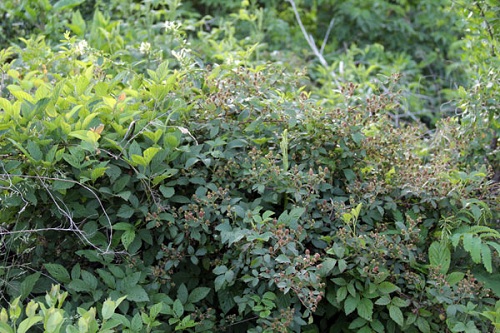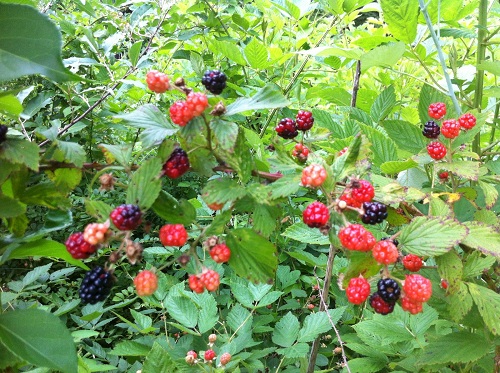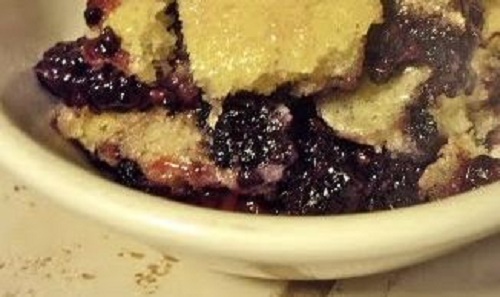The blackberry patch in the wild can be treacherous. Left to its own devices, the newer growth rises up to supplant the older dead vines. In this way the young leafy vines rest atop the older, woody vines. In spring the entire patch is crowned with a golden green, then a frosting of white blossoms, each like a tiny single-layer rose. The snow white blossoms open in clusters, a harbinger of the berries to come, each one a minuscule, tightly compressed imitation of a bunch of grapes.

Because of their density, blackberry patches are perfect hiding places for bees, wasps and snakes, all of which seek protection in these thorny lairs. Only the most determined berry picker wearing the toughest outer garments will pierce through the thick barrier of the patch to reach the sweet berries rising up high in the center. Wild blackberries produce jellies and cobblers almost too delicious to describe. My own memories of my mom’s thick blackberry cobbler, the hot purple juice bubbling up through flaky crust loaded with butter and sugar, can make me drool even in the depths of winter.

If you venture into the wilds for blackberries, you will need heavy boots for tramping down the vines. Jeans and socks saturated with Deet repellent are also required, and long-sleeved shirts to protect against the thorns (which still get in). Also, consider wearing a large hat if possible to shield you from the July sun.
After a few minutes in the full sun of a berry patch, where only the largest and sweetest berries grow, one begins to question whether anything is worth the hardship.

But hours later, cool and fresh from a bath, few rewards are quite so tantalizing as the smell of a fresh blackberry cobbler beckoning from the kitchen.
© Wade Kingston
